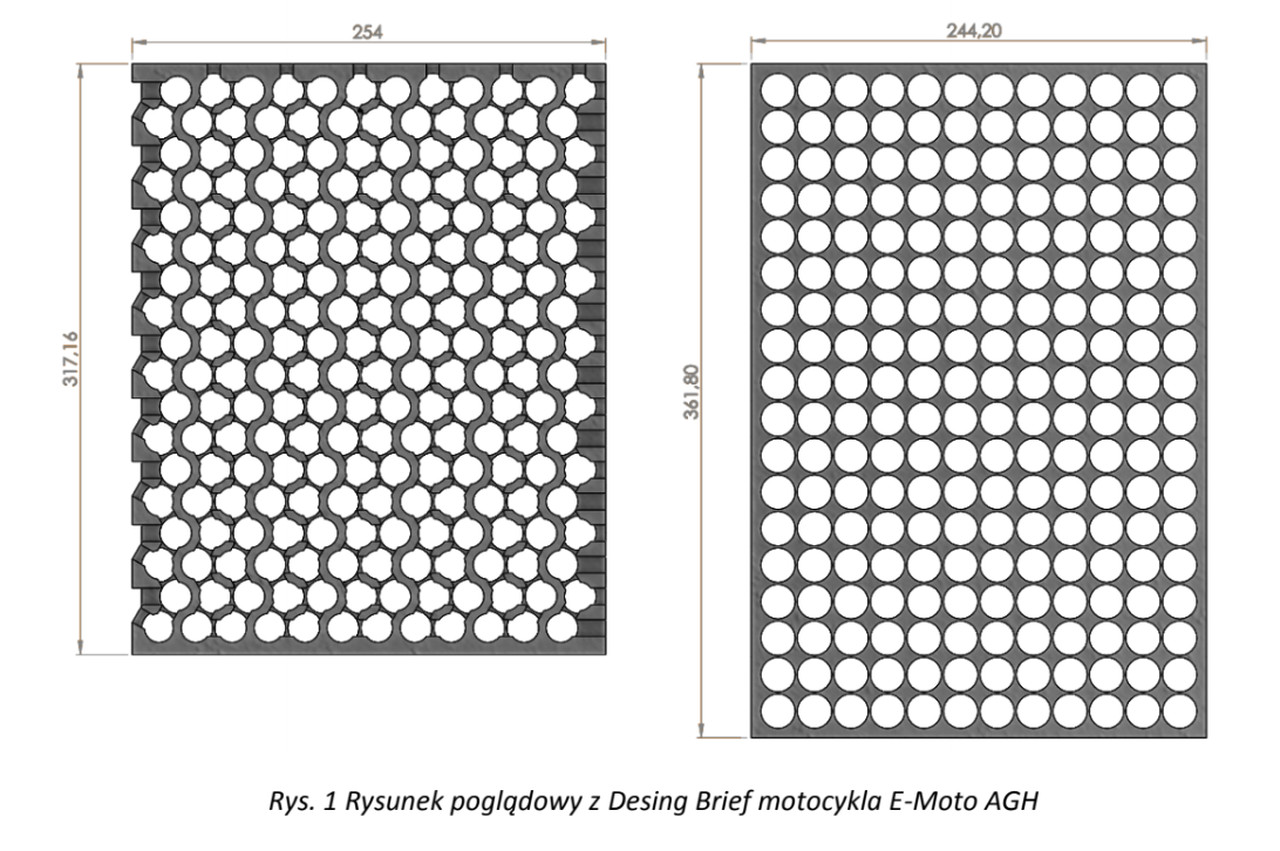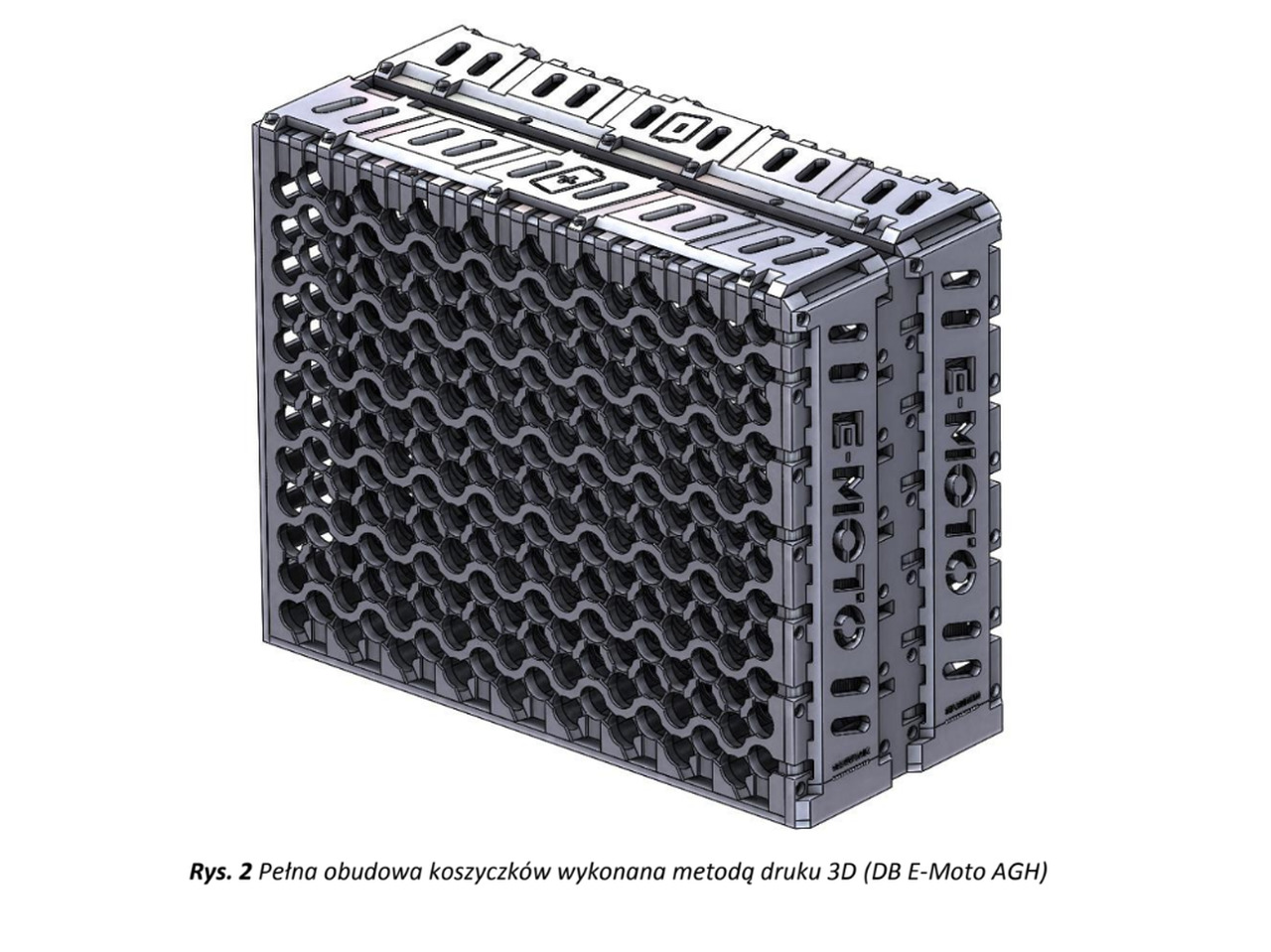The personalization of battery cages for electric motorcycles allows for a perfect fit of the elements to the solutions used in the vehicle. Students from the E-moto AGH University of Science and Technology's scientific project designed and printed lightweight, heat-resistant and yet well designed elements. This was possible thanks to the ATMAT Signal 3D printer. The results of students' work can be read in the following article.
Cell holders, are used to keep lithium-ion cells stable in one place. Visually, they can be described as a rectangular plastic frame with hollow round holes that hold single battery. Available on the market in different variants, you can easily find one with 4x5 or 3x1 configuration (number of holes in rows). But what if the stack has a non-standard, strictly defined number of cells?
Another problem comes when there is not much space available and the shape is mostly irregular (as in the case of packages located in the frame of an electric bike). Add more, glue them, cut them? Not necessarily. There are available single holdings, which can be combined with each other in any configuration of any size. However, this is not an optimal solution when we want to pack the battery as densely as possible. In addition, the different 18650 cylinder cells of different brands can vary in diameter and the standard cages have one specific size. If the handle is too loose, it will not provide adequate stability, and if it is too tight, it may cause the insulation of the cell to rub off. Holders of own design allowe you to adjust the size of the holes to the battery of a specific brand.
The solution we implemented
In order to minimize the gaps between the cells, the idea of designing personalized cages emerges. Developed by the E-Moto AGH team, these cages reduce the battery footprint by up to 2 dm2 compared to the standard solution.

Fig. 1 Overview drawing from the Design Brief of the E-Moto AGH motorcycle
Holders designed by us have also another advantage, distinguishing them from commercial solutions. The channels for copper rails, which are the positive(+) and negative(-) of the package, have been taken into account. Going further - paths for nickel connections - allowing to connect the cells in a way to obtain the desired voltage and capacity. In addition, our own design allows us to organize cable connections - each of them has its own specific place, and is protected against short circuits or mechanical damage. For a motorcycle riding in rough terrain, the resistance of the battery pack to the hardships of the route is crucial. Thanks to the possibility of easy integration of threaded inserts into the filament, the whole can be freely screwed and unscrewed, creating a fully modular battery pack.
Advantage of 3D printing
Why 3D printing? This is probably the best available method of manufacturing plastic objects that have two main advantages when it comes to cell bonding:
- are lightweight,
- do not conduct electricity.
Another important issue is their temperature resistance. The battery can heat up to nearly 60°C during operation, especially with such large packages and current loads as in a motorcycle. Therefore, it is necessary to select components that can withstand long-term operation at elevated temperatures. The most important advantage of 3D printing, however, is the possibility of giving any shape, like mentioned before and adaptation of the model to specific applications. This allows to limit space, change dimensions depending on needs and organize handles, channels for additional elements of the package. All this makes the battery optimized in terms of ergonomics and additional protection.
 Fig. 2 Full cage housing of holder for lithium-ion cells made of 3D printing method (DB E-Moto AGH)
Fig. 2 Full cage housing of holder for lithium-ion cells made of 3D printing method (DB E-Moto AGH)
3D printing proved to be a method of making cell holders, providing a compromise between weight, size, durability and eye catching design. An additional advantage is the relative ease of implementation of the elements. During the testing of motorcycle batteries, the FDM cages made with 3D printing met all the requirements of heavy off-road conditions, and during servicing it was found to be virtually undamaged. Experience with holders has made more and more custom elements in the battery are made with the use of 3D printing method.
The article and handle designs were prepared by students from the E-moto AGH University of Science and Technology.
